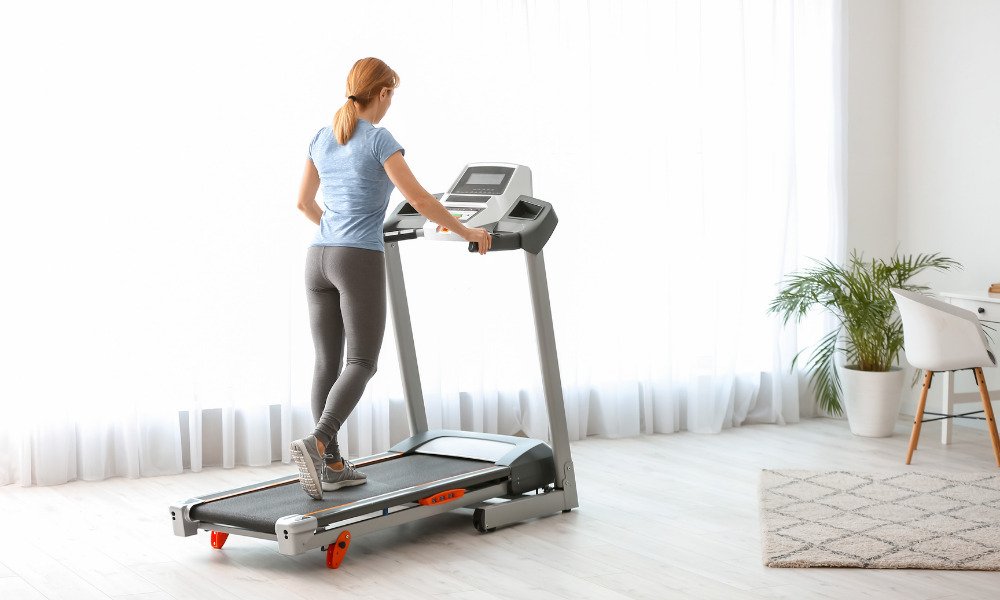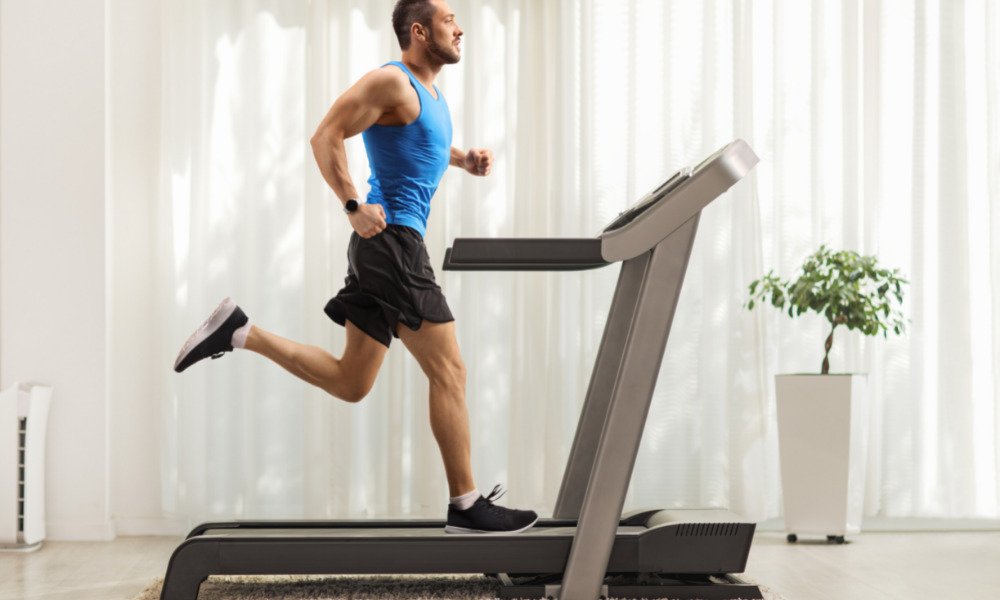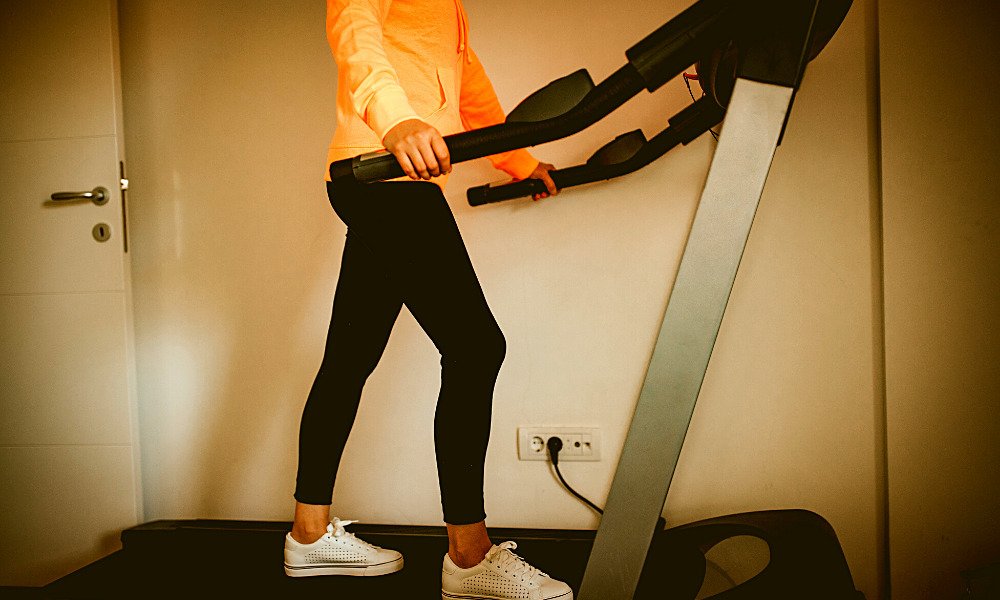How to choose a treadmill for home use? Deciding to purchase a treadmill for your home is a great idea. You’ll save a ton of money on gym fees, and you’ll be helping the environment by saving on your gas. Having a treadmill right next to your bedroom is a great motivational tool, too, as it’s much easier to get out of bed and do a 30-minute run when you don’t need to go outside in the cold, and there’s no need to have to avoid those grimy gym showers either.
However, it’s not a decision to be taken lightly. There are many things to consider when selecting the correct treadmill for your home and future uses. Read Here: Best Treadmill Machines For Walking
Read More:
- Best 3 Peloton Elliptical Reviews
- Best 3 Incline Treadmill Reviews
- Sole F85 Treadmill Reviews
- Top 3 Matrix Treadmill Reviews
- Best Elliptical Machines Under $500: Top 5 Options Reviewed
THINGS TO CONSIDER BEFORE CHOSE A TREADMILL FOR HOME USE

Who is it for? What is it used for?
First things first. When looking at the best option for your household, you’ll need to consider how many people are going to use it and for how long during the day. Each user in your home will also likely use the treadmill in a different way to achieve different outcomes. Perhaps some people are looking for a high-intensity cardio workout, in which case, they’ll do a lot of running.
Others might be looking to develop muscle tone, meaning they’re probably going to do incline walking. If you’re a casual user, you might just want to review and maintain your overall fitness, using a mixture of techniques and walking or running styles. For this, you might require a heart rate monitor.
To lose weight or to train for a racing event, you may need to see how fast you’re traveling and how much distance you’ve covered so you can gradually build up your workout over time.
Determining exactly how the treadmill will be used will need to be your first consideration before delving into the unique features and the ins and outs of each treadmill brand. Make a list of the most important things you want to get out of your treadmill before going shopping. This will ensure you don’t get drawn away by shiny obscure features that you don’t need, forgetting about the actual necessities and functionality.
- Weight
Depending on what sort of accommodation you live in, the weight of a treadmill could be a massive factor in your decision.
If you have a ground floor gym or a garage conversion, then there’s no issue with weight as your flooring will most likely be concrete, which can hold the heavy weight.
However, if you live in an apartment building and intend to start up a home gym above someone else’s apartment, the floor underneath you is more likely to be constructed from wood, which isn’t as good at load bearing.
You don’t want your new treadmill to fall through the ceiling and crush your neighbors.
- Apartment Setup
Living in an apartment isn’t the end of the world though. You don’t have to give up your treadmill dream. The important thing is to spread the load evenly over a wider surface area. Read Here: How to Reduce Treadmill Noise in an Apartment
The average US apartment floor is built to hold around 30 pounds per square foot. You’ll need to measure the surface area of the treadmill and look at the overall weight. Is the square footage wide enough to hold the weight?
If your chosen treadmill is a little too heavy for the surface area, you can distribute the weight a bit further by using a treadmill mat underneath.
These mats are usually thick rubber matting that you can place underneath your treadmill to help with weight distribution and protect your flooring underneath and stop the treadmill from sliding around while you’re using it.
- Noise Level
Noise isn’t something we immediately associate with a treadmill, but now we have; it’s all you’ll be able to hear. Depending on where you intend to place your treadmill in your home, you’ll have to consider the other people living around you to ensure your treadmill isn’t making too much noise.
If you have people living immediately next to your treadmill or below you in an apartment, you’re going to want to invest in a quieter version.
Read More:
- Best 3 Peloton Elliptical Reviews
- Best 3 Incline Treadmill Reviews
- Sole F85 Treadmill Reviews
- Top 3 Matrix Treadmill Reviews
- Best Elliptical Machines Under $500: Top 5 Options Reviewed
How to Make the Treadmill Quieter

There are several ways that you can try to tone down the noise of your treadmill yourself, as you’ll never find a completely silent one. Read Here: 10 Best Nordictrack Treadmills
- Sound-proofing
Sound-proofing can be done in several different ways if you want to disguise the sound from your neighbor next door. You could employ someone to input professional sound-proofing if you’re looking at a permanent home gym.
This involves putting an extra plasterboard wall in a few centimeters from the actual wall and filling the gap with insulation. Read Here: Owens Corning 703 Review – For Perfect Sound Insulation
If you’re looking for a cheaper option though, you could hang woolen sheets or bed covers along the wall or even put a few bookcases in. Nothing works better as a sound-proofer than a bookshelf.
- Treadmill Mats
Sound-proofing may also be needed for the floor to absorb the noise for your downstairs neighbors. Rubber gym flooring is cheap to purchase, hardwearing, and typically easy to fit. This, topped with a treadmill mat, will help to absorb the vibrations from your treadmill.
- Keeping it clean
You’ll notice that your treadmill becomes noisier over time. This is probably because the cleaning isn’t up to scratch. As more dust and fibers get caught under the belt, it’ll start to make a louder, grating noise. Regular cleaning and oiling should resolve this.
The problem with selecting a treadmill based on the sound it makes is that you’ll rarely get to ‘try before you buy.’ It’s a good idea to go into the store and see if they have a working one on display – failing that, check out a gym that might have the same model.
- Horsepower
Some treadmills are more powerful than others, and if you’re after a more professional style of workout, you’ll be looking for a motor with higher horsepower to give you the right experience.
You should find a treadmill with a motor that boasts at least 1.5 continuous-duty horsepower (CHP).
If you’re on the heavier side or want a faster pace, you might want to consider a 2.5 or even 3 CHP – although these will come at a higher cost. 1.5 CHP should be enough for casual use.
- Foldability
Depending on where your home gym is, the ability to fold away your treadmill could be a necessity. Some treadmills (usually the older models) are static and not meant for moving around too much. That’s not great if you aren’t planning to use your treadmill all the time.
Consider whether you’re going to be setting up a home gym that will remain as a gym the whole time or whether you plan to use your treadmill to do a bit of running in the living room every so often in front of the TV.
If you’re not a hardcore gymer, you’ll need to find a treadmill that folds up into the smallest surface area and has wheels underneath the mechanism so you can quickly move it in and out of rooms at will.
- Belt Size
Believe it or not, treadmills come with different belt sizes, which can affect their performance. It’s all down to the size of the users too.
Everyone will need a belt that’s at least 48 inches long and 18 inches wide. However, if you’re tall (over 6 ft), your strides are likely to be longer, meaning you should go for a 54-inch belt instead to maximize your performance.
- Your Weight
You’ll also need to consider the weight of the different people that intend to use the treadmill in your household. A treadmill fit for a person that is 100lbs might not move if it has someone twice as heavy on there, and it certainly won’t move as quickly.
To select the best option for you, you should look at the maximum user weight, which should be displayed on the packaging of all treadmills. They tend to be a little optimistic with the weight they can hold, so take away 50lbs to be on the safe side.
- Cleaning
Treadmills do take a surprising amount of maintenance, especially if you want it to last for a long time. If you maintain them well, they hold their value though, so you may be able to further sell it for a reasonable price down the line if you take care of it. Read Here: How to Clean a Treadmill Belt
To thoroughly clean a treadmill, you need to:
- Wipe the screen and arms with a plastic-friendly cleaner and non-abrasive cloth. It may be best to use standard dish soap and a microfiber cloth to avoid smears.
- Loosen and remove the belt to wipe underneath. The belt may also need oiling underneath to keep it running smoothly.
- Dust removal from the mechanism underneath the mechanism hood and from underneath the belt itself. This may require a hoover, then a more nimble duster.
One of the main features you’re looking for in a treadmill is the flexibility to clean, making your job easier. You’ll need a treadmill where the mechanism cover is easily removed for hoovering, the belt comes off (and quickly goes back on again with no hassle), and the track folds up to clean underneath.
Your treadmill will require a good clean every few uses, especially if it’s placed in a garage or somewhere that quickly gathers dust, so you need to ensure your cleaning regime will be a quick job.
- Incline Settings
Most treadmills these days will incorporate an incline option so you can walk or run uphill if you want to, intensifying your workout. However, the number of incline options will largely depend on the model. Some only have a flat option and 1-3 incline variations. This generally means that the treadmill becomes steeper much more quickly.
This is fine if you’re looking for casual use. However, building muscle tone and focusing on different muscle groups will require a gradual build-up.
It’s also not ideal to go from completely flat ground to a 45-degree angle, as this isn’t always reflective of the actual running environment if you’re practicing for a racing event, for example.
Ideally, you’d be looking for a treadmill with between 8-12 incline variations to allow you to gradually build up and cool down during your workout and reflect the natural terrain.
However, if you’re going to go really high-tech, some treadmills will reach up to 16 incline variations, each with subtle differences.
- Pricing
Pricing is right at the bottom of your list here, not because it’s not important, but because you need to ensure that you’re purchasing the exact model that you need with all of the correct functions before looking at the price.
It’s no good being lured in by the cheaper option, only to find that it doesn’t do what you need it to do. Find a few options that fit all of your requirements, then see which one best fits into your budget. A good treadmill can be anything from $1000 to $3500, depending on how professional you’d like it to be.
Always keep in mind that the cheapest might be the cheapest for a reason. It might do you some good to splash the cash, rather than having to shell out again in a few years’ time.
Read More:
- Best 3 Peloton Elliptical Reviews
- Best 3 Incline Treadmill Reviews
- Sole F85 Treadmill Reviews
- Top 3 Matrix Treadmill Reviews
- Best Elliptical Machines Under $500: Top 5 Options Reviewed
Consider Second Hand

Buying second-hand isn’t always a bad thing. As long as a treadmill has been looked after, it can last for years, and you could find one for half the price if it’s second hand. Read Here: Top 10 Best Treadmills Under $1000
Gyms may also sell off their old equipment when they want to purchase brand new. Usually, a gym will buy the more recent models or even be gifted with newer models as part of a brand’s advertising strategy. This means that the old models– which aren’t likely to be that old – will be going cheap. Shop around to try and find yourself a bargain.
Summary
Buying a home treadmill is a great idea to get in shape while keeping it convenient, especially if you have a hectic lifestyle. There are many things to consider before you go ahead with your purchase though, so make sure you do all of your research before going ahead.
